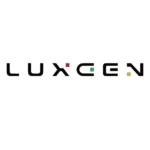Korea’s export sector maintained its upward trajectory in April, marking a seventh consecutive month of growth, as reported by the Ministry of Trade, Industry and Energy (MOTIE) on May 1. Exports for April surged to US$56.26 billion, a 13.8% increase from the previous year, driven by high demand for semiconductors and automobiles, particularly in the United States where exports reached an all-time high.
Semiconductors, Korea’s flagship export, recorded a significant rise, fetching US$9.96 billion, marking the second-highest April export value on record with a year-on-year increase of 56.1%. The growth in IT components, including displays and computers, also saw substantial increases, indicating sustained recovery and expansion across technology sectors.
The automotive sector, which had experienced a dip in February and March due to decelerating electric vehicle sales globally, rebounded strongly. April saw automotive exports climb to US$6.79 billion, the highest figure ever recorded for the month, showcasing a 10.3% increase year-on-year. This rebound underscores Korea’s resilience and adaptability in a rapidly evolving global auto market.
Notably, Korea’s exports to the United States surged by 24.3% to reach $11.4 billion, outpacing exports to China, and maintaining the U.S. as Korea’s top export destination since December 2023. This shift is significant, as it marks the first time in over two decades that the U.S. has surpassed China in this regard. Analysts attribute this to increased Korean investment in key U.S. industries, such as semiconductors and batteries, spurred by incentives under the U.S. Chips Act and the Inflation Reduction Act.
Furthermore, Korea’s trade balance in April showed a surplus of US$1.53 billion, continuing a positive trend for the eleventh consecutive month. This surplus was bolstered by a 5.4% increase in imports, totaling US$54.73 billion, driven by heightened energy demands and higher refinery utilization rates.
As Korea’s export engine continues to gain momentum, the focus on diversifying markets and enhancing high-tech manufacturing capabilities appears to be paying off, positioning the nation for sustained economic growth and resilience in the face of global market fluctuations.






